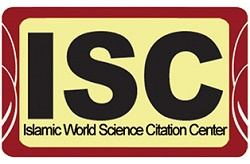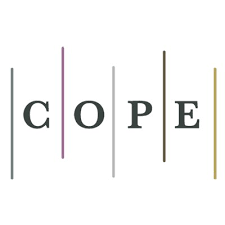Predatory Publication in Science and Ethical Principles: Features and Solutions
DOI:
https://doi.org/10.52547/ijimes.2.4.65DOR:
https://dorl.net/dor/20.1001.1.27832678.2022.2.4.5.8Keywords:
Predatory journals, scientific publishing, academic journals, peer-reviewAbstract
Purpose: The scientific endeavor necessitates publication and assessment of research output with peer-review at its core. Conventional academic publication models, research appraisal, and peer-review procedures, on the other hand, have always been open to abuse and malpractice, putting the integrity of research at risk and exposing the scholarly communication system to overt economic predation. Predatory journals are a well-known problem in scientific publication, and they serve as repository for fabricated research. The volume of predatory journals has increased in recent years, and thus it is vital to propose a resolution to this problem. A well-known problem in scientific publishing is predatory journals, and they are repositories for phony research. The volume of predatory journals has risen in recent years, and it is imperative to present a solution for this academic fraud.
Methodology: In this review, the researchers conducted a systematic literature search of the following databases that included Web of Science (all databases), online library repositories. All processes of the review stages included access to the search results and full articles for review and consequent analysis. Articles were added after screening full text articles by meeting the inclusion criteria and meeting none of the exclusion criteria. As there were a high number of articles reporting findings on predatory journals, they were further screened re-evaluated for relevance and for any deviation from the theme of this study.
Findings: This paper illustrates and examines predatory publishing regarding academic journals, as well as offering a list of features to use in identifying predatory publications. The report concludes with a discussion of proposed solutions on what should be done to eliminate or mitigate the challenges of this development.
Originality/Value: In this paper, we will discuss predatory journals, and basic characteristic in identifying them.
Downloads
References
Beall, J. (2016). Best practices for scholarly authors in the age of predatory journals. The Annals of The Royal College of Surgeons of England, 98(2), 77-79.
Drenth, P. J. (2012). A European code of conduct for research integrity. Promoting Research Integrity in a Global Environment. ALLEA (All European Academies), 161.
Liyanagunawardena, T. R., Adams, A. A., & Williams, S. A. (2014). MOOCs: A systematic study of the published literature 2008-2012. Distance Education in China, 3, 5-16.
Munn, Z., Barker, T., Stern, C., Pollock, D., Ross-White, A., Klugar, M., ... & Shamseer, L. (2021). Should I include studies from “predatory” journals in a systematic review? Interim guidance for systematic reviewers. JBI evidence synthesis, 19(8), 1915-1923.
Ylijoki, O. H. (2003). Entangled in academic capitalism? A case-study on changing ideals and practices of university research. Higher education, 45(3), 307-335.
DeBehnke, D. J., Kline, J. A., & Shih, R. D. (2001). Research fundamentals: choosing an appropriate journal, manuscript preparation, and interactions with editors. Academic Emergency Medicine, 8(8), 844-850.
Agarwal, A., Durairajanayagam, D., Tatagari, S., Esteves, S. C., Harlev, A., Henkel, R., ... & Bashiri, A. (2016). Bibliometrics: tracking research impact by selecting the appropriate metrics. Asian journal of andrology, 18(2), 296.
Forrester, A., Björk, B. C., & Tenopir, C. (2017). New web services that help authors choose journals. Learned Publishing, 30(4), 281-287.
De Rond, M., & Miller, A. N. (2005). Publish or perish: Bane or boon of academic life?. Journal of management inquiry, 14(4), 321-329.
Miller, A. N., Taylor, S. G., & Bedeian, A. G. (2011). Publish or perish: Academic life as management faculty live it. Career development international. 16(5), 422-445.
Kabulo, K. D. M., Kanmounye, U. S., Ntshindj, S. M., Yengayenga, K., Takoutsing, B. D., Ntenga, P., ... & Kalangu, K. K. N. (2022). Vulnerability of African Neurosurgery to Predatory Journals: An Electronic Survey of Aspiring Neurosurgeons, Residents, and Consultants. World Neurosurgery, 161, e508-e513.
Miller, a. N., & Bedeian, a. G. (2010, August). Publish or perish: Academic life as we live it. In Academy of Management Proceedings (Vol. 2010, No. 1, pp. 1-6). Briarcliff Manor, NY 10510: Academy of Management.
Baker, E. F., Iserson, K. V., Aswegan, A. L., Larkin, G. L., Derse, A. R., Kraus, C. K., & American College of Emergency Physicians Ethics Committee. (2019). Open access medical journals: Promise, perils, and pitfalls. Academic Medicine, 94(5), 634-639.
Cortegiani, A., Longhini, F., Sanfilippo, F., Raineri, S. M., Gregoretti, C., & Giarratano, A. (2019). Predatory open-access publishing in anesthesiology. Anesthesia & Analgesia, 128(1), 182-187.
Sureda‐Negre, J., Calvo‐Sastre, A., & Comas‐Forgas, R. (2022). Predatory journals and publishers: Characteristics and impact of academic spam to researchers in educational sciences. Learned Publishing.
Ferris, L. E., & Winker, M. A. (2017). Research integrity corner: Special issue on predatory journals. Biochemia Medica, 27(2), 279-84.
Paci, M., Bianchini, C., & Baccini, M. (2022). Reliability of the PEDro scale: comparison between trials published in predatory and non-predatory journals. Archives of Physiotherapy, 12(1), 1-9.
Freedman, E., & Kurambayev, B. (2022). Predatory Journals in Journalism and Mass Communication: A Case Study of Deceptions. Journal of Scholarly Publishing, 53(3), 136-154.
Beall, J. (2016). Best practices for scholarly authors in the age of predatory journals. The Annals of The Royal College of Surgeons of England, 98(2), 77-79.
Kendall, G. (2021). Beall's legacy in the battle against predatory publishers. Learned Publishing, 34(3), 379-388.
Shen, C., & Björk, B. C. (2015). ‘Predatory’open access: a longitudinal study of article volumes and market characteristics. BMC medicine, 13(1), 1-15.
Coney, K. D., Lalu, M. M., Skidmore, B., Ahmadzai, N., Grudniewicz, A., & Moher, D. (2018). What is a predatory journal?: a scoping review: version 2; referees: 3 approved. F1000Research, 7, 1001.
Abad-García, M. F. (2019). Plagiarism and predatory journals: A threat to scientific integrity. Anales de Pediatría (English Edition), 90(1), 57-e1.
Laine, C., & Winker, M. A. (2017). Identifying predatory or pseudo-journals. Biochemia médica, 27(2), 285-291.
Oermann, M. H., Conklin, J. L., Nicoll, L. H., Chinn, P. L., Ashton, K. S., Edie, A. H., ... & Budinger, S. C. (2016). Study of predatory open access nursing journals. Journal of Nursing Scholarship, 48(6), 624-632.
Beall, J. (2010). “Predatory” open-access scholarly publishers. The Charleston Advisor, 11(4), 10-17.
Dadkhah, M., & Bianciardi, G. (2016). Ranking predatory journals: solve the problem instead of removing it!. Advanced pharmaceutical bulletin, 6(1), 1-4.
Richtig, G., Berger, M., Lange‐Asschenfeldt, B., Aberer, W., & Richtig, E. (2018). Problems and challenges of predatory journals. Journal of the European Academy of Dermatology and Venereology, 32(9), 1441-1449.
Beall, J. (2017). Predatory journals threaten the quality of published medical research. journal of orthopaedic & sports physical therapy, 47(1), 3-5.
Cook, C. (2017). Predatory journals: the worst thing in publishing, ever. journal of orthopaedic & sports physical therapy, 47(1), 1-2.
da Silva, J. A. T., Moradzadeh, M., Adjei, K. O. K., Owusu-Ansah, C. M., Balehegn, M., Faúndez, E. I., ... & Al-Khatib, A. (2022). An integrated paradigm shift to deal with ‘predatory publishing’. The Journal of Academic Librarianship, 48(1), 102481.
Stojanovski, J., & Marušić, A. (2017). Does small equal predatory? Analysis of publication charges and transparency of editorial policies in Croatian open access journals. Biochemia Medica, 27(2), 292-299.
Beall, J. (2015). Predatory journals and the breakdown of research cultures. Information development, 31(5), 473-476.
Ciro, J. B., & Bowker, L. (2020). Investigating academic library responses to predatory publishing in the United States, Canada and Spanish-speaking Latin America. Aslib Journal of Information Management.
Petrisor, A. I. (2018). Predatory Publishers using Spamming Strategies for Call for Papers and Review Requests: A Case Study. DESIDOC Journal of Library & Information Technology, 38(3), 199-207.
Sarfraz, Z., Sarfraz, A., Anwer, A., Nadeem, Z., Bano, S., & Tareen, S. (2020). Predatory journals: A literature review. Pakistan Journal of Surgery and Medicine, 1(1), 42-51.
Memon, A. R. (2016). ResearchGate is no longer reliable: leniency towards ghost journals may decrease its impact on the scientific community. J Pak Med Assoc, 66(12), 1643-1647.
Mathew, R. P., & Patel, V. (2021). Predatory Journals-The Power of the Predator Versus the Integrity of the Honest. Current Problems in Diagnostic Radiology, 51(5), 740-746.
Grudniewicz, A., Moher, D., Cobey, K. D., Bryson, G. L., Cukier, S., Allen, K., ... & Lalu, M. M. (2019). Predatory journals: no definition, no defense. Nature volume 576 (7786), 210 – 212.
Elmore, S. A., & Weston, E. H. (2020). Predatory journals: what they are and how to avoid them. Toxicologic Pathology, 48(4), 607-610.
Frandsen, T. F. (2017). Are predatory journals undermining the credibility of science? A bibliometric analysis of citers. Scientometrics, 113(3), 1513-1528.
Shamseer, L., Moher, D., Maduekwe, O., Turner, L., Barbour, V., Burch, R., ... & Shea, B. J. (2017). Potential predatory and legitimate biomedical journals: can you tell the difference? A cross-sectional comparison. BMC medicine, 15(1), 1-14.
Eriksson, S., & Helgesson, G. (2017). The false academy: predatory publishing in science and bioethics. Medicine, Health Care and Philosophy, 20(2), 163-170.
Haug, C. J. (2015). Peer-review fraud—hacking the scientific publication process. New England Journal of Medicine, 373(25), 2393-2395.
Rahman, S., Baumgartner, M. R., Morava, E., Patterson, M., Peters, V., & Zschocke, J. (2016). Peer review fraud—it’s not big and it’s not clever. Journal of inherited metabolic disease, 39(1), 1-2.
Ferguson, C., Marcus, A., & Oransky, I. (2014). The peer-review scam. Nature, 515(7528), 480.
Lewinski, A. A., & Oermann, M. H. (2018). Characteristics of e-mail solicitations from predatory nursing journals and publishers. The Journal of Continuing Education in Nursing, 49(4), 171-177.
de Oliveira Sousa, F. S., Nadanovsky, P., Dhyppolito, I. M., & Dos Santos, A. P. P. (2021). One year of unsolicited e-mails: The modus operandi of predatory journals and publishers. Journal of Dentistry, 109, 103618.
Elmore, S. A., & Weston, E. H. (2020). Predatory journals: what they are and how to avoid them. Toxicologic Pathology, 48(4), 607-610.
Bowman, J. D. (2014). Predatory publishing, questionable peer review, and fraudulent conferences. American journal of pharmaceutical education, 78(10).
Mercier, E., Tardif, P. A., Émond, M., & Le Sage, N. (2017). Predatory publishers and fraudulent conferences: Perspectives and implications for novice researchers. Perspectives on Medical Education, 6(6), 433-434.
Callaghan, C. W., & Nicholson, D. R. (2020). Predatory publishing and predatory journals: A critical review and proposed research agenda for higher education. Journal of Further and Higher Education, 44(10), 1433-1449.
Gutierrez, F. R., Beall, J., & Forero, D. A. (2015). Spurious alternative impact factors: The scale of the problem from an academic perspective. BioEssays, 37(5), 474-476.
Goldacre, B. (2015). So this company Cyagen is paying authors for citations in academic papers. Bad Science Blog.
Hvistendahl, M. (2013). China's publication bazaar.
Coyne, J. (2016). Dissertations for sale! Why Evolution is True Blog.
Pearson, G. S. (2017). Avoiding predatory journals with “think. check. submit.”. Journal of the American Psychiatric Nurses Association, 23(4), 239-240.
Published
How to Cite
Issue
Section
License
Copyright (c) 2022 Kenneth Nwanua Ohei, Sam Lubbe

This work is licensed under a Creative Commons Attribution 4.0 International License.












